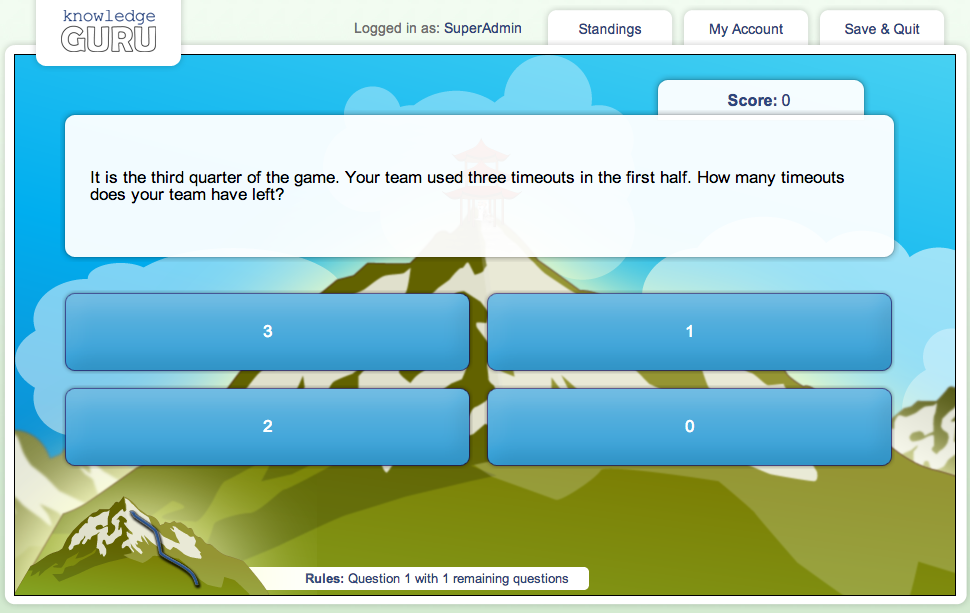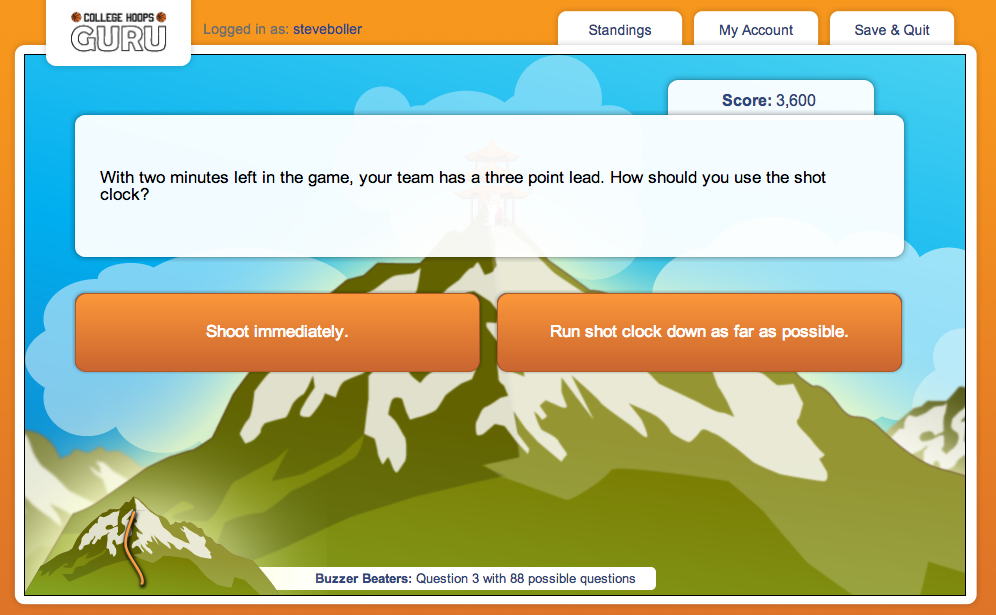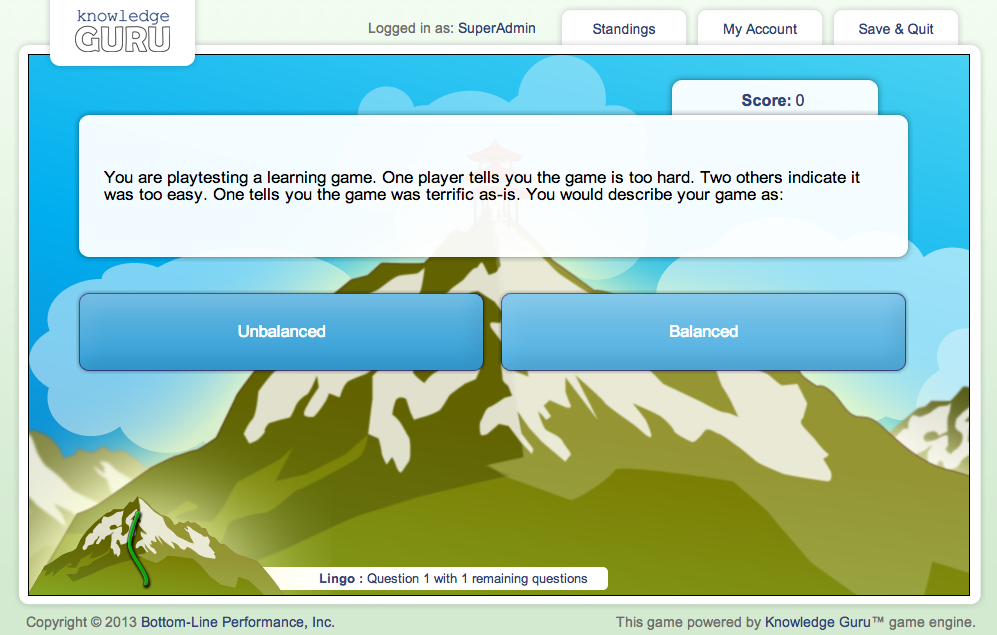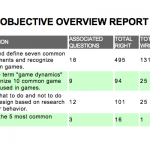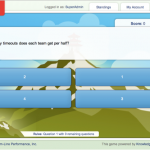How to Write Scenario Questions in Knowledge Guru
Many types of eLearning use scenarios to help learners master new topics. Scenarios are also a popular technique to use when designing Knowledge Guru questions.
Knowledge Guru questions are broken into question sets, which are three iterations of the same question. This is explained in depth in another tutorial. We find it useful to use a scenario-based question as the third iteration, or “Path C” question for most question sets. This will usually be the third question of the set that learners encounter, so it is a good way to reinforce what they have learned on the previous paths.
Good scenario questions are realistic, interesting, and aligned with the appropriate learning objective. They should introduce anything that has not been covered in previous iterations of the question, but approach the same information in a different way.
Examples:
The learning objective for this question is “Identify the number of timeouts a team gets per half,” and this question approaches the objective in a straightforward way.
The objective for this question was more vague: “Choose the best strategy given five end of game situations.” Since our goal was to evaluate the overall strategic abilities of the player, rather than evaluate their grasp of a specific strategy, the objective works. One way to get more quantitative data would be to identify five different aspects of the game that require strategy, break them into separate objectives, and write a scenario for each one.
The objective here is to “Identify and define seven common game elements and recognize their use in games.” Since this objective has multiple parts (seven to be exact), there are actually six question sets written to support it. This question is part of one question set, designed to teach one of the common game elements. Notice once again that the objective is simple and straightforward. Identifying “seven” game elements instead of “being aware of common game elements” makes success much easier to measure.
Summary
- Use scenario questions as much as possible, usually as the third iteration, or Path C question.
- Make sure the scenario is realistic, and as simple as possible.
- Align scenarios to the objective being reinforced through the other two iterations in the question set. Don’t introduce new information in the scenario.

